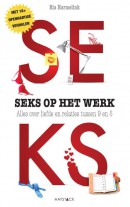Product informatie
- ISBN 9789076368108
- ISBN 10 9076368104
- Druk 1
- Bindwijze Paperback
- Taal Engels
- Uitgever Universiteit Leiden hodn Leiden Universi
- Onderwerp Non-fictie informatief/professioneel algemeen
- Beschikbaar sinds 25 Februari 2014
Samenvatting
This is the first book in which Post-Roman pottery in Central Greece and in the Aegean is treated comprehensively, covering the entire period from Late Antiquity to Modern times. This richly illustrated study offers an extensive typo-chronological discussion of the Medieval and Post-Medieval wares found in Boeotia, as well as a discussion of the relation between this pottery and Medieval and Post-Medieval society, economy and culture. In the first part of the book, the main problems related to chronology and terminology of Post-Roman ceramics in the Aegean will be discussed. In addition, a history of research will be presented, beginning with pioneers in the 19th century via David Talbot Rice to more recent developments such as underwater archaeology and surface surveys. Also, the current state ... of research per period will be reviewed, focussing on large excavations in Constantinople/Istanbul, on the Greek Mainland and Greek Islands as well as on Cyprus. The second part of the book is focussed on Boeotia. After an introduction of previous research into Post-Roman ceramics in Boeotia, a catalogue of sites with Post-Roman ceramic finds from the field survey of the Boeotia Project will be presented. Furthermore, an effort is made to combine the ceramic data from these sites into a regional typo-chronological classification system, which encompasses 48 diagnostic Medieval and Post-Medieval wares, ranging from locally produced Red Slip wares and amphorae to imported tin glazed wares from Italy and Turkey, such as Maiolica and Iznik Ware. Attention will also be given to the changes in shapes and decoration of the pottery through time, in an effort to establish a relationship between changing vessel shapes and changing vessel function from Late Antiquity onwards. In the third part of the book, the technological and socio-economic aspects of the Post-Roman ceramics from Boeotia will be explored. Firstly, the socio-economic infrastructure for the production and distribution of pottery from Late Roman times onwards is discussed, including the location of major towns, ports, rural settlements, land and sea routes as well as the presence of artisans/craftsmen, merchants, markets, fairs and the role of the governing classes. Also, the production and distribution of pottery in Post-Roman Boeotia will be discussed from a local perspective, based on the archaeological evidence as well as on written sources and ethnographic/ethnoarchaeological studies of traditional pottery production in Early Modern Greece and Cyprus. In addition, the Boeotian material is discussed in a wider socio-economic context. Here models from archaeology and sociology, such as the "world-system" theory of Immanuel Wallerstein are used in an effort to understand the processes of production, prices, import and distribution of the tin-glazed wares in the Aegean area from the 16th to the 18th centuries (e.g. Maiolica from Italy, Iznik and Kütahya Wares from Turkey). In the fourth part of the book, the focus is on the changing use of table equipment and the history of dining habits in the Eastern Mediterranean from Late Roman to Early Modern times. Apart from the pottery, Medieval and Post-Medieval texts (ranging from budgets of pious foundations and cookbooks to the 15th-16th century Ottoman tax registers of Boeotian villages and traveller's accounts), as well as pictographic representations of dining scenes from the 5th to the 20th centuries are used as sources of information (e.g. mosaics, frescoes, miniatures).
Meer boeken van uitgever Universiteit Leiden hodn Leiden Universi
Meer boeken met de onderwerpen Non-fictie informatief/professioneel algemeen
Veel gestelde vragenmeer antwoorden
Hoe werkt Resale.nl?
Je kunt op de website advertentie(s) plaatsen van de boeken die u wilt verkopen. Een potentiële koper neemt dan contact met je op om samen een prijs af te spreken en de transactie verder af te handelen. Houdt hierbij onze aanbevelingen voor een veilige transactie in gedachten en voorkomt dat je slachtoffer wordt van oplichting.
Hoe kom ik in contact met de verkoper?
Je kunt een reactie versturen door bij de betreffende advertentie van de verkoper op de knop ‘doe een bod’ te drukken. Je kunt nu een bod doen op de advertentie en een persoonlijk bericht toevoegen. Het verstuurde bod brengt je in contact met de verkoper via e-mail.
Wat zijn de kosten voor het verkopen van mijn studieboeken?
Je kunt geheel gratis gebruik maken van de diensten van Resale.nl. Resale.nl haalt zijn inkomsten uit advertenties.
Hoe kan ik een boek kopen?
Resale.nl werkt globaal op de volgende manier:
- Zoek via het zoekveld het studieboek dat je wilt kopen.
- Uit de zoekresultaten kies je het studieboek waar je geïnteresseerd in bent.
- Op de detailpagina van het studieboek kun je een overzicht vinden van de personen die het studieboek verkopen.
- Je kunt nu een bod plaatsen door op de button te klikken. Het bod wordt via e-mail aan de verkoper verzonden.
- De verkoper van het studieboek neemt contact met je op door een reactie te geven op het bod dat je hebt verzonden. Met de verkoper kun je gezamenlijk een prijs afspreken. Houdt hierbij onze aanbevelingen voor een veilige overdracht in gedachten en voorkom dat u slachtoffer wordt van oplichting.
Hoe weet ik wat ik koop?
Om te achterhalen of wat je koopt ook daadwerkelijk is wat er wordt geadverteerd is het verstandig om bij de verkoper langs te gaan en het aangebodene te bezichtigen. Doe je dit niet, dan loopt je een zeker risico. Onder het kopje ‘Hoe kan ik de kans op misbruik verkleinen’ kun je meer over dit onderwerp vinden.
Kopers over Resale.nl
bart van gijsel
"Ik ben erg tevreden over deze verkoper de familie thus. Goede snelle levering."
Patrice Michel
"De verkoper heeft er alles aan gedaan om het door mij bestelde product zo snel mogelijk naar mij toe te krijgen. Heeft me van iedere stap op de hoogte ..."
marjolein
"Besteeling snel bezorg, in goede staat net zoals beschrijving en goede communicatie met verkoper!"
marjolein
"Goed contact, snel en in goede orde ontvangen. Staat van het boek was zo goed als nieuw!"
hilda1
"goede medewerking en hulp dank u wel"
Tineke
"Het bestelde werd netjes en snel afgeleverd. De prijs was goed."
stacy
"Goed verpaktBoek ziet er mooi uit"
elisa
"Goede levering alleen jammer dat er niet bij was gezet dat er al in geschreven was"
Elly
"Verkoper reageerde snel op mijn emails en heeft ook het boek snel opgestuurd.Het boek was niet van nieuw te onderscheiden. Was waarschijnlijk niet gebruikt. ..."
Gerard+[2]
"Prettig contact gehad en goed zaken kunnen doen."
















